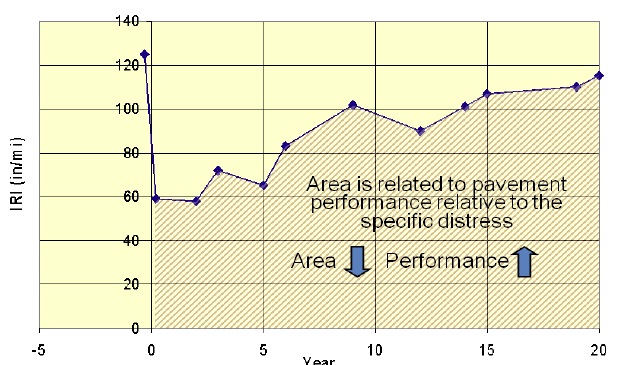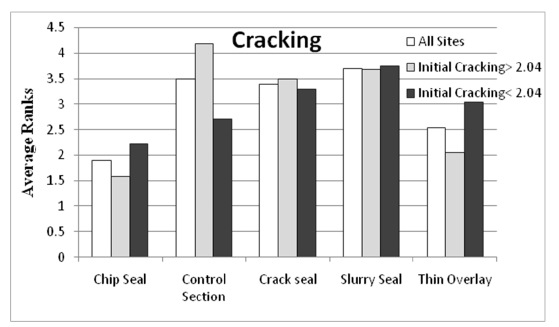FEDERAL HIGHWAY ADMINISTRATION
Executive Summary
The main goal of this project was to use Long-Term Pavement Performance (LTPP) Specific Pavement Study (SPS) experiment data to assess the impact of different design, construction, and rehabilitation features on pavement response and performance for specific site conditions. The analysis sought to identify which features could help achieve the best short-term and long-term performance and to evaluate the effectiveness of common maintenance practices used for flexible and rigid pavements.
Preventative Maintenance Treatment
The findings of this study are based on the analysis of 81 SPS-3 flexible pavement sites and 34 SPS-4 rigid pavement sites subjected to different preventive maintenance treatments. Most of the flexible pavement sites were monitored for at least 4 years, and approximately 22 percent of the sites were monitored for 10 years or more. Most of the rigid pavement sites were monitored for at least 4 years.
Of all SPS-3 treatments, thin overlay was the only effective alternative to mitigate and delay the progression of roughness; however, it was effective only for pavements in freeze zones, high traffic, or poor condition. It was found that thin overlays could only perform better relative to roughness compared to other treatments if the International Roughness Index (IRI) level was higher than 7.34 ft/mi (1.39 m/km). For lower IRI levels, the sections performed similarly and independent of the treatment, and there was no advantage of applying thin overlays.
Thin overlays slowed the progression of rutting under all circumstances. Chip seal was more effective than slurry seal in wet freeze zones but was only marginally more effective in dry freeze zones. There were no significant differences among slurry seal, crack seal, and the no treatment scenario with respect to rutting, as expected.
Thin overlays and chips seals were more effective than slurry seal and crack seal treatments in mitigating fatigue cracking. Thin overlays performed better than most other treatments if the pavement was in a freeze zone, in a wet climatic region, initially in poor condition as well as subjected to high traffic. For fatigue cracking, thin overlays and chip seals outperformed the other treatments, as well as the control section, when the initial cracking was lower than 232.13 ft2/mi (13.4 m2/km). For higher levels of cracking, every treatment outperformed the control section. Specifically, chip seals performed best, followed by thin overlays.
The data analysis from SPS-4 sites indicated that the joint/crack sealed sections and undersealed sections performed similarly to the control sections. Also, no meaningful differences were found between the two treatments. The analysis was based on a relatively small number of sites that had 4 years of performance history that included recorded surveys with undersealing treatment. While 34 sites were included in the survey measurements for joint/crack sealed sections, only 10 had data for undersealed sections.
About the Federal Highway Administration
www.fhwa.dot.gov
“The Federal Highway Administration (FHWA) is an agency within the U.S. Department of Transportation that supports State and local governments in the design, construction, and maintenance of the Nation’s highway system (Federal Aid Highway Program) and various federally and tribal owned lands (Federal Lands Highway Program). Through financial and technical assistance to State and local governments, the Federal Highway Administration is responsible for ensuring that America’s roads and highways continue to be among the safest and most technologically sound in the world.”
Tags: Federal Highway Administration, FHWA, National Academy of Sciences, transportation, Transportation Research Board








 RSS Feed
RSS Feed